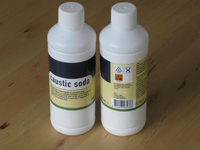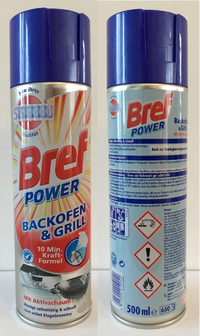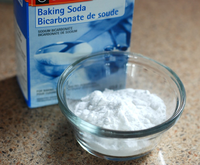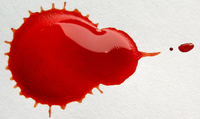Difference between revisions of "Base"
(→Key Stage 4) |
|||
| Line 49: | Line 49: | ||
===Extra Information=== | ===Extra Information=== | ||
{{#ev:youtube|https://www.youtube.com/watch?v=DupXDD87oHc}} | {{#ev:youtube|https://www.youtube.com/watch?v=DupXDD87oHc}} | ||
| + | |||
| + | ===References=== | ||
| + | ====AQA==== | ||
| + | :[https://www.amazon.co.uk/gp/product/0198359373/ref=as_li_tl?ie=UTF8&camp=1634&creative=6738&creativeASIN=0198359373&linkCode=as2&tag=nrjc-21&linkId=952a73bbb09d222ecc4b50d200679849 ''Bases, page 204, GCSE Biology; Third Edition, Oxford University Press, AQA ''] | ||
| + | :[https://www.amazon.co.uk/gp/product/1782945954/ref=as_li_tl?ie=UTF8&camp=1634&creative=6738&creativeASIN=1782945954&linkCode=as2&tag=nrjc-21&linkId=100574c08fbbb64318256eb79ed61a76 ''Bases, page 246, GCSE Biology, CGP, AQA ''] | ||
| + | :[https://www.amazon.co.uk/gp/product/1471851354/ref=as_li_tl?ie=UTF8&camp=1634&creative=6738&creativeASIN=1471851354&linkCode=as2&tag=nrjc-21&linkId=9012a0d354024419214fb3ad5ac44ba0 ''Bases, page 247, GCSE Combined Science Trilogy 1, Hodder, AQA ''] | ||
| + | :[https://www.amazon.co.uk/gp/product/1471851346/ref=as_li_tl?ie=UTF8&camp=1634&creative=6738&creativeASIN=1471851346&linkCode=as2&tag=nrjc-21&linkId=3ac654f4b0da781c49c855a1af4c92ea ''Bases, page 280, GCSE Chemistry, Hodder, AQA ''] | ||
| + | :[https://www.amazon.co.uk/gp/product/1782945598/ref=as_li_tl?ie=UTF8&camp=1634&creative=6738&creativeASIN=1782945598&linkCode=as2&tag=nrjc-21&linkId=ad276ad49df77ab4b40ab4fd0fe09709 ''Bases, pages 128, 129, GCSE Combined Science; The Revision Guide, CGP, AQA ''] | ||
| + | :[https://www.amazon.co.uk/gp/product/178294639X/ref=as_li_tl?ie=UTF8&camp=1634&creative=6738&creativeASIN=178294639X&linkCode=as2&tag=nrjc-21&linkId=51599bb45a2bfaf7c1b6a978b2ca2616 ''Bases, pages 130-132, GCSE Combined Science Trilogy; Chemistry, CGP, AQA ''] | ||
| + | :[https://www.amazon.co.uk/gp/product/1782945962/ref=as_li_tl?ie=UTF8&camp=1634&creative=6738&creativeASIN=1782945962&linkCode=as2&tag=nrjc-21&linkId=476bb5c8d1dfb5c08ac81b6d4d1c98d8 ''Bases, pages 155-157, GCSE Chemistry, CGP, AQA ''] | ||
| + | :[https://www.amazon.co.uk/gp/product/1782945571/ref=as_li_tl?ie=UTF8&camp=1634&creative=6738&creativeASIN=1782945571&linkCode=as2&tag=nrjc-21&linkId=9e29fad914244909903e5e93f8a01d56 ''Bases, pages 51, 54, GCSE Chemistry; The Revision Guide, CGP, AQA ''] | ||
| + | :[https://www.amazon.co.uk/gp/product/0198359381/ref=as_li_tl?ie=UTF8&camp=1634&creative=6738&creativeASIN=0198359381&linkCode=as2&tag=nrjc-21&linkId=47c8d1ae58d8b3a5e2094cd447154558 ''Bases, pages 92-93, 96-97, 163, GCSE Chemistry; Third Edition, Oxford University Press, AQA ''] | ||
Revision as of 11:14, 28 October 2019
Contents
Key Stage 3
Meaning
A base is a metal compound with a pH greater than 7.
About Bases
- A base can be Harmful, Irritant or corrosive.
- Bases can neutralise an acid.
- Many bases are insoluble solids.
- A base can be a:
- Metal Hydroxides are soluble bases known as 'Alkalis'.
Examples
| Drain cleaner is around pH 14. | Oven cleaner is around pH 13.5. | Toilet cleaner is around pH 12. |
| Baking soda is around pH 9.5. | Sea water is around pH 8. | Blood is around pH 7.4. |
Key Stage 4
Meaning
A base is a compound which is able to produce OH- ions when dissolved in water to form a solution with a pH greater than 7.
About Bases
- Bases are ionic compounds where there is an ionic bond between a metal and an Oxide, Carbonate or Hydroxide.
- Bases will react with acids to form a salt.
- Some bases are insoluble.
- A soluble base will dissolves in water to produce an alkali which has Hydroxide ions which are either donated by the base or formed by a reaction with water to form a Hydroxide ion.
- The Hydroxide ions in an alkali will donate electrons to Hydrogen ions to form water. This is a neutralisation reaction.
Extra Information
References
AQA
- Bases, page 204, GCSE Biology; Third Edition, Oxford University Press, AQA
- Bases, page 246, GCSE Biology, CGP, AQA
- Bases, page 247, GCSE Combined Science Trilogy 1, Hodder, AQA
- Bases, page 280, GCSE Chemistry, Hodder, AQA
- Bases, pages 128, 129, GCSE Combined Science; The Revision Guide, CGP, AQA
- Bases, pages 130-132, GCSE Combined Science Trilogy; Chemistry, CGP, AQA
- Bases, pages 155-157, GCSE Chemistry, CGP, AQA
- Bases, pages 51, 54, GCSE Chemistry; The Revision Guide, CGP, AQA
- Bases, pages 92-93, 96-97, 163, GCSE Chemistry; Third Edition, Oxford University Press, AQA





